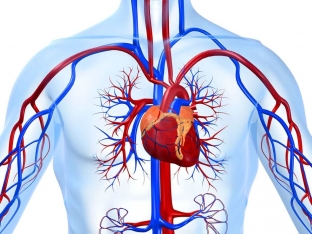The treatment of arterial hypertension against the background of stenosis of the renal vessels is a topical and important issue today. After all, conservative treatment by some groups of drugs at a certain stage ceases to have a positive effect, which is associated with the mechanism of the pathogenesis of renovascular hypertension.
Treatment of arterial hypertension due to stenosis of renal vessels consists in normalizing blood pressure, reducing the risk of developing cardiovascular complications and preventing kidney failure.
What drug groups are effective in the treatment of arterial hypertension?
An important role in the treatment of arterial hypertension belongs to a diet with salt restriction to an amount of less than 3 g / day. Among the drugs, ACE inhibitors and angiotensin receptor blockers act on the main link of pathogenesis. With fibromuscular dysplasia, they are very effective. At the same time, with hemodynamically significant bilateral renal artery stenosis, these drugs can cause a sharp destabilization of renal hemodynamics, therefore they are contraindicated.
When treating renovascular hypertension with these drugs, it is worth monitoring the level of creatinine and potassium in the blood. Calcium channel blockers of the dihydropyridine series also have a pronounced antihypertensive effect, while not exacerbating metabolic disorders, stopping the growth of plaques.
Calcium channel blockers are not restricted and can be used as first line drugs. Often, monotherapy is not effective, and the appointment of blockers, diuretics or imidazoline receptor agonists is required. With the ineffectiveness of conservative therapy in the treatment of arterial hypertension, surgical intervention is indicated.
Methods of surgical intervention in the treatment of arterial hypertension:
- Percutaneous balloon angioplasty.
- Open operation.

Surgical treatment of arterial hypertension in its renovascular form
Surgical intervention is performed when conservative methods of treating arterial hypertension are ineffective. The benefits of surgical treatment are evidenced by the high risk of side effects from drugs, their interactions, as well as high material costs.
The goal of surgery is to restore the patency of the vessel and the formation of normal blood flow in the vessels of the kidneys. The main method of surgical treatment of arterial hypertension against the background of renal hypertension is percutaneous balloon angioplasty and open surgery. Let's consider these types of surgical intervention in more detail.
Advantages and disadvantages of balloon angioplasty in the treatment of arterial hypertension
Percutaneous balloon angioplasty – the process of "spreading" compressed section of the vessel by catheterization of the vessel using a special balloon. Large peripheral vessels are used for access, usually the femoral arteries. The advantage of balloon angioplasty in comparison with open surgery is the absence of the need for anesthesia and the small amount of intervention in the treatment of arterial hypertension.
Undoubtedly, such an operation has a risk of complications (massive bleeding, rupture of a vessel, destruction of an unstable plaque, development of a cholesterol embolism). A contraindication to surgery is the localization of stenosis at the mouth of the renal artery and its complete occlusion. There is a high risk of restenosis after surgery.
Open angioplasty in the treatment of arterial hypertension in stenosis of renal vessels
Open angioplasty – the process of removing an atherosclerotic plaque along with a damaged area of the intima of an artery, followed by reconstruction. For reconstruction, the patient's own large vessels or prostheses made from biologically compatible materials are used. Sometimes shunting is used.
The advantage of open surgery is the possibility of complete reconstruction of the vessel, elimination of blood flow turbulence, removal of the affected intima and atheromatous masses. The removal of these substances contributes to the cessation of the inflammatory process in the vessel wall and restenosis of the arteries. Open surgery makes it possible to carry out complex treatment using prosthetics of large branches of the abdominal aorta. The disadvantage of this operation is an increased risk of complications from the heart – vascular system in the elderly. This is due to blood loss, anesthesia and hypovolemia.
Thus, if conservative therapy is ineffective, it is still possible to solve the problem of a constant increase in blood pressure due to stenosis of the renal arteries. To do this, use surgical methods for the treatment of arterial hypertension.







Add a comment